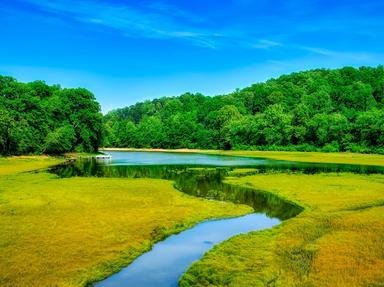Quiz Answer Key and Fun Facts
1. The state of Georgia, which was named after King George II of England, is known for some of its "firsts", like hosting the first gold rush in the U.S. and being the first largest state east of the Mississippi River. Can you tell me, though, what "lasts" Georgia has experienced?
2. The charter of Georgia, as one of the original colonies of the British Crown, prohibited slavery.
3. Technically, soon after Georgia was first established, its western border extended all the way to the Mississippi River. What two states now comprise the land that lies between it and Georgia?
4. Jim Crow laws were once all the rage in the southern U.S. and Georgia was no exception. These laws were deliberately designed to keep people of color "in their place". From these laws sprang the interesting concept of so-called 'separate but equal' status for blacks; incorporating such bizarre ideas as water fountains designated as "Whites Only" or "Colored"; people of color riding in the rear of public transportation, "Whites Only" signage at diners, "black" schools, "white" schools, etc. Where does the term "Jim Crow" trace its origins?
5. Blacks were not the only people that Georgians discriminated against. The Native Americans of Georgia suffered greatly as well. They were rousted and removed against their will, and were first marched en masse to Oklahoma to "Indian Territory". Much later, some of those who survived the infamous "Trail of Tears" force-march were allowed to return east. Some of my ancestors were among those who took the trail westward, and then eventually returned near to their original point of departure. In what area were they so kindly allowed to resettle?
6. Where did the term "Georgia Cracker" originate?
7. A group of people of African descent 'borrowed' a native American Creek Indian word to name their sub-culture "Gullah-Geechee". In what area of Georgia do the Gullahs or Geechees live?
8. Where in Georgia would you find The Little White House, which was once a presidential retreat for a U.S. president, and why was this area chosen for his summer home?
9. The French, the Spanish and the English all took an interest in and laid claim at various times to one of Georgia's most picturesque small towns on the Georgia coast. What is the name of this tiny little town that lies just across the river from the state of Florida?
10. The Grand Canyon is in... Georgia. What?
Well, not exactly, but there IS a place that is often called "Georgia's Little Grand Canyon" near Lumpkin in southwest Georgia. What is the name of this state park that comprises over 1000 acres of fantastic scenery that displays colors in the eroded soil that range from almost bone-white to pink and purple, red, brown, yellow, and black?
Source: Author
logcrawler
This quiz was reviewed by FunTrivia editor
Pagiedamon before going online.
Any errors found in FunTrivia content are routinely corrected through our feedback system.

